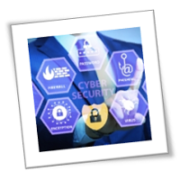The digital realm is teeming with risks that can compromise business data. Thankfully, a variety of tools and technologies are available for your company to fortify its cybersecurity. Two-factor authentication (2FA) and two-step verification (2SV) are among the most effective methods for bolstering your defenses against attackers.
2FA and 2SV are often used interchangeably, but they are, in fact, two distinct approaches to security. Let’s take a look at the differences between them and explore how they can benefit your business.
Two-factor authentication
2FA is a security measure that requires users to provide two different types of credentials in order to log into their accounts. Typically, the first factor consists of something that the user knows, such as a password. The second factor could be something like a one-time passcode sent via text message or email or a biometric identifier, such as a fingerprint.
With 2FA enabled on your business accounts, cybercriminals will have a harder time gaining access to these. Even if they somehow manage to obtain the first factor (e.g., by guessing your password), they still won’t be able to log in without the second piece of information, which only you can have.
Two-step verification
2SV is similar to 2FA in that it requires two pieces of information to gain access to an account. However, the difference between the two lies in the number of authentication steps involved. As the name suggests, 2SV requires two authentication steps: one where the user provides their first factor (e.g., a password) and another where they provide additional information that proves they are who they say they are.
For example, with 2SV enabled on your business accounts, users may be asked to provide a second form of authentication when they attempt to log in from an unfamiliar device or IP address. This could be in the form of another password, a one-time passcode generated by an authentication app on their phone, or some other type of verification.
Benefits of 2FA and 2SV for businesses
Enabling 2FA and/or 2SV on your business accounts can provide a variety of benefits, including:
- Improved security – By adding an extra layer of authentication, you can reduce the risk of unauthorized access to your accounts.
- Enhanced compliance – By using advanced authentication, such as 2FA and 2SV, you can ensure that your business is meeting industry and government standards for data security.
- Reduced costs – Fewer unauthorized access attempts means fewer chances of fraud and data theft, which can lead to significant cost savings over time.
Which is best for your business?
The decision of whether to use 2FA or 2SV depends on a number of factors, such as the size and complexity of your business, the type of data you are storing, and the level of security you require.
For example, if your business is storing sensitive data, such as customer credit card information, then a multifactor authentication system that includes both 2FA and 2SV may be the most appropriate choice. On the other hand, if you are simply looking to add an extra layer of protection to your email accounts, then a 2FA system may be all that is needed.
Ultimately, the best authentication solution for your business will depend on its individual needs and requirements. It is always a good idea to consult with an experienced security professional to ensure that you are making the right decision.
Our team of experts is here to help you make the best choice for your business. Get in touch with us today to learn more about 2FA and 2SV and how they can improve your security.
If you are looking for an expert to help you find the best solutions for your business talk to GCInfotech about a free technology assessment
Published with consideration from TechAdvisory.org SOURCE





